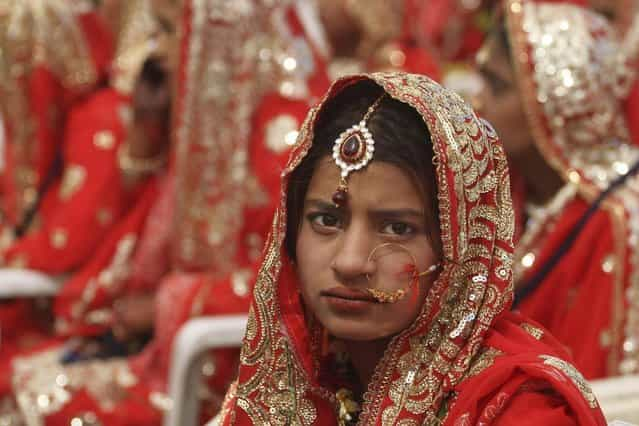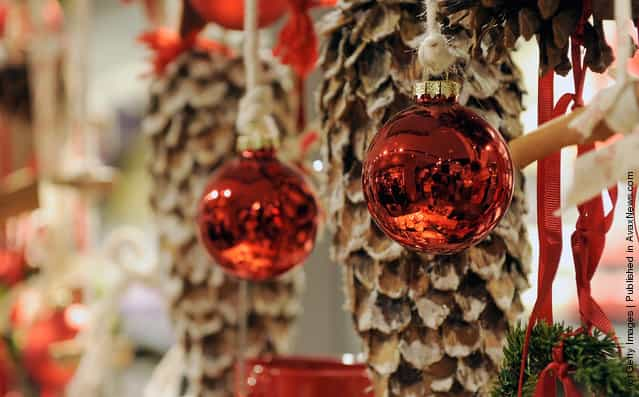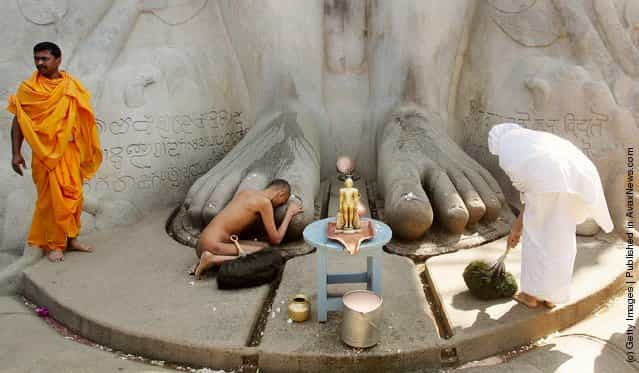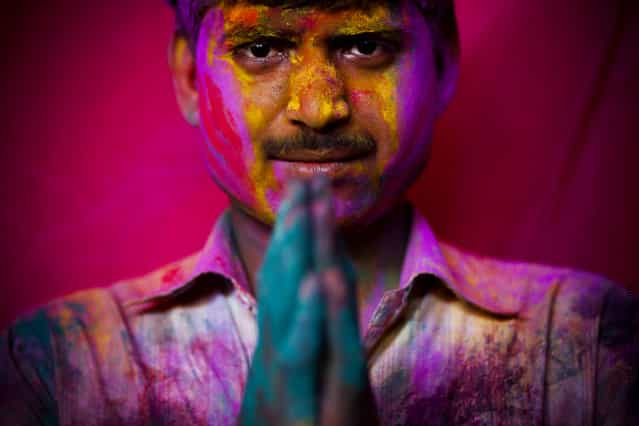Mehndi Or Indian Henna Tradition
Advertisements:
[Mehndi or menhdi is the application of henna as a temporary form of skin decoration in India, as well as by expatriate communities from the country. The word mehndi is derived from the Sanskrit word mendhikā. The use of mehndi and turmeric is described in the earliest Vedic ritual books. Haldi (Staining oneself with turmeric paste) as well as mehndi are important Vedic customs as a symbolic representation of the Outer and the Inner Sun. Vedic customs are meant to awaken the [inner light] and so the gold of the inner Sun has an important symbolic function.
Traditional mehndi designs draw the sun on the palm, which in this context represents the mind. Mehndi decorations became fashionable in the West in the late 1990s, where they are sometimes called henna tattoos. Henna is typically applied during special occasions like weddings and Hindu festivals like Karva Chauth, Diwali, Bhaidooj and Teej. In some Hindu festivals, every woman tries to have Henna done on her hands and feet. It is usually drawn on the palms and feet, where the color will be darkest because the skin contains higher levels of keratin which binds temporarily to lawsone, the colorant of henna. Henna was originally used as a form of decoration mainly for brides.
In the modern age, usually people buy readymade Henna cones, which are ready to use and make painting easy. However, in rural areas in India, women grind fresh henna leaves on sil (grinding stone) with added oil, which though not as refined as professionally prepared henna cones, brings much darker colors]. – Wikipedia
Photos: Application of henna or [Mehndi] to a girls hand in a market on October 18, 2010 in Jaipur, India. (Photo by Simon de Trey-White/Getty Images)
Traditional mehndi designs draw the sun on the palm, which in this context represents the mind. Mehndi decorations became fashionable in the West in the late 1990s, where they are sometimes called henna tattoos. Henna is typically applied during special occasions like weddings and Hindu festivals like Karva Chauth, Diwali, Bhaidooj and Teej. In some Hindu festivals, every woman tries to have Henna done on her hands and feet. It is usually drawn on the palms and feet, where the color will be darkest because the skin contains higher levels of keratin which binds temporarily to lawsone, the colorant of henna. Henna was originally used as a form of decoration mainly for brides.
In the modern age, usually people buy readymade Henna cones, which are ready to use and make painting easy. However, in rural areas in India, women grind fresh henna leaves on sil (grinding stone) with added oil, which though not as refined as professionally prepared henna cones, brings much darker colors]. – Wikipedia
Photos: Application of henna or [Mehndi] to a girls hand in a market on October 18, 2010 in Jaipur, India. (Photo by Simon de Trey-White/Getty Images)
![Application of henna or [Mehndi] to a girls hand in a market in Jaipur, India Application of henna or [Mehndi] to a girls hand in a market in Jaipur, India](http://img.gagdaily.com/uploads/posts/charm/2013/thumbs/00004e9d_medium.jpg)
![Application of henna or [Mehndi] to a girls hand in a market in Jaipur, India Application of henna or [Mehndi] to a girls hand in a market in Jaipur, India](http://img.gagdaily.com/uploads/posts/charm/2013/thumbs/00004e9e_medium.jpg)
![Application of henna or [Mehndi] to a girls hand in a market in Jaipur, India Application of henna or [Mehndi] to a girls hand in a market in Jaipur, India](http://img.gagdaily.com/uploads/posts/charm/2013/thumbs/00004e9f_medium.jpg)
![Application of henna or [Mehndi] to a girls hand in a market in Jaipur, India Application of henna or [Mehndi] to a girls hand in a market in Jaipur, India](http://img.gagdaily.com/uploads/posts/charm/2013/thumbs/00004ea0_medium.jpg)
![Application of henna or [Mehndi] to a girls hand in a market in Jaipur, India Application of henna or [Mehndi] to a girls hand in a market in Jaipur, India](http://img.gagdaily.com/uploads/posts/charm/2013/thumbs/00004ea1_medium.jpg)
![Application of henna or [Mehndi] to a girls hand in a market in Jaipur, India Application of henna or [Mehndi] to a girls hand in a market in Jaipur, India](http://img.gagdaily.com/uploads/posts/charm/2013/thumbs/00004ea2_medium.jpg)
![Application of henna or [Mehndi] to a girls hand in a market in Jaipur, India Application of henna or [Mehndi] to a girls hand in a market in Jaipur, India](http://img.gagdaily.com/uploads/posts/charm/2013/thumbs/00004ea3_medium.jpg)
![Application of henna or [Mehndi] to a girls hand in a market in Jaipur, India Application of henna or [Mehndi] to a girls hand in a market in Jaipur, India](http://img.gagdaily.com/uploads/posts/charm/2013/thumbs/00004ea4_medium.jpg)
![India Launches [Leave me Alone] Campaign to Save Indian Tigers India Launches [Leave me Alone] Campaign to Save Indian Tigers](http://img.gagdaily.com/uploads/posts/fact/2013/short/0000f066_medium.jpg)








![Rare [Hybrid] Total Solar Eclipse Rare [Hybrid] Total Solar Eclipse](http://img.gagdaily.com/uploads/posts/fact/2013/short/00010c55_medium.jpg)






